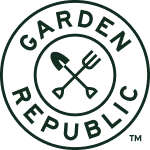Beginner gardeners can find the task fairly arduous and frustrating, especially when they’ve followed all the rules and somehow still can’t get their seeds to produce anything. There are a number of factors that could be preventing your seeds from growing including water and sunlight, but the biggest issue people don’t realize is that germination plays a major role in the outcome of your seeds.
You can’t expect much from your seeds if they never go through the process of gaining their first set of roots. Here are some ways to help them reach the soil faster!
Paper Towel Method
This is by far one of the easiest methods of germinating seeds, no matter what kind of plant it is! When moist, a paper towel behaves the same way soil does, providing a warm, dark, and protected environment for your seeds.
Get your paper towel and fold it into a few squares, then place it under some running water and quickly pull it away. Squeeze out the excess, too much causes mold growth. Open the last square and place your seeds inside gently, you can then put the paper towel in a plastic bag or on a plate to prevent the likelihood of mold growth.
The roots of your seeds will extend into the fiber of the paper towel, so be sure to plant as soon as they appear as it could be difficult to remove them from the paper once they’re woven in. If this does happen, its best to remove as much paper as possible and place the rest in the soil. It won’t hurt your plant.
Rockwool Cubes
These helpful little blocks can be purchased at just about any Home Depot or local gardening store. Rockwool cubes are made from a fibrous material that is well-aerated and firm. Perfect for Bonsai Tree seeds and plants that are a bit larger in size, all you need to do is soak the cubes for about 30 minutes. Then poke a hole through the top and add your seeds. You’ll want to add 1 or 2 at a time, since rockwool cubes are generally made for singular use.
Rockwool cubes can cost a little more than some of the other methods, but it does work rather well in terms of reducing seed waste.
Soil Pods
They’re much less expensive than the rockwool cubes, and they provide a better environment for things like herbs and floral decorations. They come in round discs filled with compressed soil; like the rockwool, soil pods need to be soaked, but they expand within a few minutes so you won’t have to wait as long to plant them.
Push a few seeds into your pod once it has expanded and keep the soil moist.
Water Germination
This method can be tricky, as you have to pull your seeds out at just the right time. Germinating seeds in water isn’t impossible, but it's not ideal; this is something you can do if you don’t have other resources though!
Simply drop your seeds in a plain water cup and place cling wrap over the top. When you see condensation, remove the cling wrap, wipe the edges of the cup, and place new plastic wrap over it.
Once you see root formation, take the seeds out immediately and plant them to avoid mold growth.
Traditional Germination
It's always best to start with a smaller location, but sometimes putting seeds straight into the soil is a better option, just be sure to use the proper planting depth. This is especially true if you’re the kind of person who sets up their germination station and forgets about it until weeks later.
Water and give sunlight accordingly, most of the time overwatering is an issue with traditional planting. If this happens, just give your plant some extra sunlight and allow it to soak up the extra moisture.



